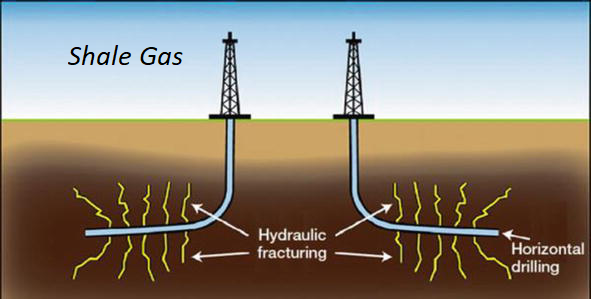The development of shale gas technology has been a major step forward for the energy industry. However, there is still much more that can be done to improve the technology and make it more efficient. In this blog post, we’ll explore some of the ways that the technology for shale gas can be improved, such as advances in hydraulic fracturing, increased environmental safety, and more efficient production methods. Read on to learn more about how to improve the technology for shale gas.
Read more about Shale Gas: Bobby Lee Koricanek
The Problem with Shale Gas
Shale gas has become increasingly popular in recent years, with many companies investing heavily in the exploration and extraction of this natural resource. However, many of these investments have not been successful due to the difficult and complex nature of shale gas extraction. The process is expensive and difficult to manage, and can also cause environmental damage when it is done incorrectly.
Extraction
In order to ensure that shale gas extraction is as safe and efficient as possible, it is necessary to improve the existing technology used to extract it. This requires looking at the existing methods of extraction, understanding their limitations, and then researching new solutions that could lead to improved outcomes.
At its core, shale gas extraction involves the removal of natural gas from underground shale formations using hydraulic fracturing (also known as fracking). This method requires injecting a mixture of water, sand, and chemicals into the shale formation at high pressure in order to crack the rocks and release the gas.
Environmental Damage
One of the biggest problems with this method is that it can cause environmental damage if not managed correctly. For example, it can cause groundwater contamination if the fracking fluids escape from the well and make their way into local water sources. Additionally, it can also lead to air pollution if certain chemicals used in the process are released into the atmosphere.
Better Sealing Technologies
The good news is that there are a number of potential solutions that could help reduce or eliminate these risks. For example, developing better sealing technologies for wells can help prevent any leakage from occurring. Additionally, researching new types of fracking fluids that are less damaging to the environment can also help reduce the environmental impact of shale gas extraction.
Improving Data Collection
Finally, improving data collection and monitoring techniques can help ensure that shale gas extraction is done safely and efficiently. By understanding exactly what is happening during the fracking process, operators can ensure that they are following best practices and minimizing any potential harm to the environment.
By researching and implementing new technologies for shale gas extraction, we can ensure that it is done as safely and efficiently as possible. This will not only benefit those involved in the extraction process but will also protect our environment from any potential harm caused by this activity.
The Solution: Improved Technology
Shale gas has become an increasingly important source of energy in recent years. However, its development is limited by the lack of suitable technology for the safe and efficient extraction of resources. This article will discuss some of the solutions that can be used to improve the technology for shale gas extraction.
Drilling Technology
One solution is to use horizontal drilling technology. This type of drilling allows for the extraction of gas from much deeper underground, thereby increasing the amount of gas that can be extracted with each well. Furthermore, horizontal drilling technology is less disruptive to the surrounding environment than traditional vertical drilling.
Fracking
Another solution is to use hydraulic fracturing, also known as fracking. Fracking involves injecting a mixture of water, sand, and chemicals deep into the earth’s surface in order to break apart the rock and release the trapped gas. While fracking does have some environmental risks associated with it, such as groundwater contamination and air pollution, it has been proven to be effective in extracting large amounts of shale gas.
Gas Extraction
Finally, another solution is to invest in more advanced technology for shale gas extraction. Technologies such as seismic imaging, seismic tomography, and 3D mapping can help identify areas with higher concentrations of shale gas, thus allowing for more efficient extraction processes. Furthermore, these technologies can also be used to monitor the effects of extraction on the environment and ensure that operations are conducted safely.
By using the solutions discussed above, it is possible to improve the technology for shale gas extraction. This improved technology can help to ensure that shale gas extraction is conducted safely and efficiently, while at the same time protecting the environment from any potential harm.
The Benefits of Improved Technology
Shale gas is a natural gas found in shale rock formations. It has become increasingly important for the global energy mix due to its abundance and low cost. However, there are still challenges with extracting shale gas in an efficient and environmentally safe manner. That’s why improving the technology used for shale gas extraction can be beneficial in many ways.
Better Technology
For starters, better technology can help increase the efficiency of shale gas extraction. With better tools, companies can more easily identify areas where shale gas is available and extract it more quickly. This means that they can produce more gas in a shorter amount of time while spending less money on labor and equipment. In turn, this leads to lower costs and higher profits for the companies involved.
Finally, better technology can also lead to more safety for workers and communities around drilling sites. For instance, companies could develop tools that enable them to accurately monitor air quality near shale gas wells or technologies that alert workers of any potential safety issues. This could help ensure that workers and communities remain safe during extraction operations.
Sustainable Extraction Process
Improved technology can also lead to a more sustainable extraction process. For example, companies could develop technologies that minimize water usage during shale gas extraction, as well as technologies that reduce methane emissions. This would help protect the environment and reduce the environmental impact of shale gas extraction.
Conclusion
In conclusion, improved technology for shale gas extraction can provide many benefits. From increased efficiency and lower costs to greater sustainability and enhanced safety, improved technology can make a big difference in how we extract shale gas. As such, investing in improved technologies should be a priority for companies involved in shale gas extraction.
The Future of Shale Gas
The use of shale gas as a source of energy has become increasingly popular in recent years. It is not only an inexpensive and efficient form of energy but also one with a lower environmental impact than many other sources. However, there are still some areas where technology needs to be improved to make shale gas a more viable option.
In terms of safety, technological advances have made it possible to reduce the risk associated with the extraction and production of shale gas. Innovations like sophisticated sensors, remote monitoring systems, and automated shutoff valves can all help to ensure that operations remain safe and efficient.
Economic Side
On the economic side, further improvements are needed to make shale gas more cost-effective. For instance, advances in drilling and extraction technology can help to reduce the costs associated with these processes. Additionally, better methods of storage and transportation can help to keep shale gas prices low.
Reduce Environmental Impact
Finally, technological advancements are needed to reduce the environmental impact of shale gas production. This includes improvements to reduce the amount of water used in extraction and production processes, as well as technologies that can capture methane emissions. By investing in these improvements, we can continue to make shale gas a more sustainable source of energy.













































